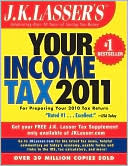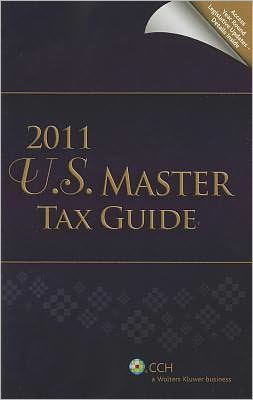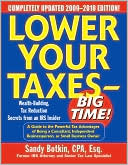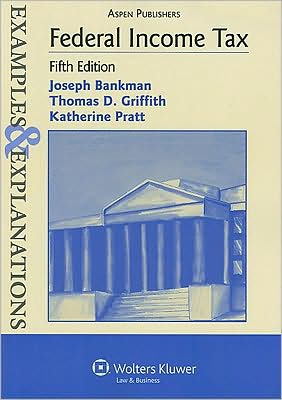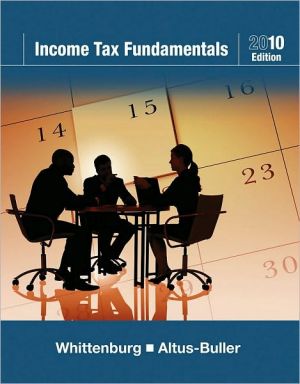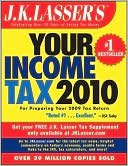J.K. Lasser's From Ebay to Mary-Kay: Taxes Made Easy for Your Home Business
The ultimate guide to running a tax-efficient home-based business\ Today, millions of people are making either a full- or part-time living selling things on Internet auction sites like eBay. Still more are making a living selling products from their homes—think Mary Kay and Avon. If you're just entering the home-based or online business arena, you might not be aware of your potential tax liability.\ With J.K. Lasser's From eBay to Mary Kay, leading tax consultant Gary Carter walks you through...
Search in google:
The ultimate guide to running a tax-efficient home-based business Today, millions of people are making either a full- or part-time living selling things on Internet auction sites like eBay. Still more are making a living selling products from their homes—think Mary Kay and Avon. If you're just entering the home-based or online business arena, you might not be aware of your potential tax liability. With J.K. Lasser's From eBay to Mary Kay, leading tax consultant Gary Carter walks you through the challenges of accounting for a home-based business. Topics covered throughout this comprehensive guide include: * Can you deduct the use of your home? * Are there ways to avoid taxes entirely? * What types of taxes might you owe? * How do you account for your inventory? * What are the rules on collecting sales and use taxes? The advantages of operating a home-based business are countless, but many owners don't realize—and are often unprepared to handle—the host of complex tax issues surrounding them. J.K. Lasser's From eBay to Mary Kay will show you how to account for your home-based business and avoid unnecessary tax trouble. J.K. Lasser—Practical Guides for All Your Financial Needs Please visit our Web site at www.jklasser.com
J.K. Lasser's From Ebay to Mary Kay\ \ By Gary W. Carter \ John Wiley & Sons\ ISBN: 0-471-77104-X \ \ \ Chapter One\ The Lay of the Land\ The Tax Code, once you get to know it, embodies all the essence of life: greed, politics, power, goodness, charity. -Sheldon Cohen (Former IRS Commissioner)\ Some folks view our tax rules as an edict from the IRS. That's not quite the case. It is true that the IRS is an ominous bureaucracy with broad powers. Nevertheless, the IRS is not the law maker but the administrator of a tax system enacted by Congress. The purpose of this chapter is to give you fundamental knowledge of the legal system relating to federal taxation and to explain the interrelationship between the IRS, the courts, and Congress. It is not necessary to read this chapter to fill out your tax return. However, it is a must read if you ever receive an audit notice from the IRS.\ Legislative, Administrative, and Judicial Authority\ Our government was established under the Constitution with a system of checks and balances. The Legislative Branch (Congress) enacts the laws, the Administrative Branch (the President and cabinet) enforces the laws, and the Judicial Branch (the courts) makes sure the other two branches are operating legally and within their constitutional authority. The President delegates the administration of tax laws to the U.S. Treasury Department, which includes the IRS. You have recourse in the courts if the IRS tries to deny you rights (like deductions, exemptions, and credits) that Congress has authorized.\ Now for the tricky part: How do you know if the IRS is denying you a legitimate right? The answer to that question requires a closer look at the Legislative, Administrative, and Judicial Branches as they pertain to taxation.\ When tax legislation is enacted by Congress and signed into law by the President, it adds to or amends the Internal Revenue Code of 1986 (which is Title 26 of the U.S. Code). The Internal Revenue Code (Code) contains all of our country's tax laws, which the IRS is required to administer and enforce.\ Often the laws written by Congress are either unclear or are not specific enough to apply to particular circumstances. To enforce these laws, it is necessary for the Treasury Department and the IRS to provide interpretations. These interpretations generally come in the form of regulations from Treasury and revenue rulings and letter rulings from the IRS. The IRS also publishes revenue procedures, which tell taxpayers about IRS administrative practices.\ Regulations\ The Treasury Department issues tax regulations under authority granted by Congress. The purpose of regulations is to explain, in relatively normal language, the meaning of all or part of a Code section. They generally expand on the language and provide examples to help taxpayers comply with the Code section. Some regulations merely interpret what the Code section itself says. These are called interpretive regulations. In some Code sections, Congress provides authority for the Treasury to come up with certain rules on its own, as long as they comply with the overall intent of the Code section. These are called legislative regulations. Regulations are the highest form of administrative authority and carry considerable weight with the courts. Legislative regulations carry the force and effect of the law itself, as long as they comply with the intent of the Code section under which they are issued. Regulations are not law, however. The validity of a regulation can be questioned. Courts are not bound by regulations and can overrule them if they are unreasonable and plainly inconsistent with the Code.\ You can tell when a regulation is being referred to, as opposed to a Code section, because it will begin with the number one (if issued under an income tax Code section) followed by a decimal, then the number of the Code section. For example, Regulation Section 1.61-1 is the citation for the first regulation issued under Section 61. You will also see it cited as Reg. § 1.61-1.\ Revenue Rulings\ The National Office of the IRS issues revenue rulings. These are generally official replies by the IRS to specific questions raised by taxpayers. They also interpret tax law, but are not as authoritative as regulations (meaning the courts are more likely to disagree with them). They tend to deal with much more limited issues than regulations, often addressing a specific legal question. They are published to provide guidance in cases having similar facts to those presented in the rulings and are generally only one or two pages long.\ Here's an example of a citation for a revenue ruling: Rev. Rul. 80-52, 1980-1 C.B. 100. The "80-52" means it was the 52nd revenue ruling issued in the year 1980. The "1980-1 C.B." means this ruling can be found in the first volume of the 1980 Cumulative Bulletin. The "100" at the end means it can be found on page 100 of that Cumulative Bulletin. After 1999, revenue rulings have four digits representing the year rather than two. An example is Rev. Rul. 2000-10. For the most recent rulings, you see "I.R.B." instead of "C.B." for the citation reference. That means it can be found in the Internal Revenue Bulletin rather than the Cumulative Bulletin. What the Cumulative Bulletin and the Internal Revenue Bulletin are, and where they can be found, is discussed later under "Where to Find This Stuff" on page 8.\ Letter Rulings\ Letter rulings are issued to a particular taxpayer at the taxpayer's request, and describe how the IRS will treat a proposed transaction. If the taxpayer carries through with the transaction exactly as described in the ruling request, the IRS is bound to abide by the ruling. If the taxpayer changes any of the facts of the transaction, the IRS is no longer obligated to follow the ruling. This is a way for you to get the IRS to tell you in advance what the tax effects of a particular transaction will be. The IRS limits its letter rulings to only certain types of transactions, though. Also, the answer better be pretty important to you. A ruling request can cost as much as $7,000. However, ruling requests are only $625 if your gross income is less than $250,000. And if your ruling request involves a business-related tax issue, such as home-office expenses or residential rental property issues, you can get one for $625 if your gross income is less than $1 million.\ Letter rulings used to be called private letter rulings, because they were not available to the public. Since 1976, however, they have been available to read, after all the information that could identify the taxpayer has been deleted. They are still private in another sense though: A letter ruling is a two-party contract between the IRS and the taxpayer who requested the ruling. The IRS is not obligated to treat a similar transaction by another taxpayer in the same way. That means you cannot rely on someone else's letter ruling with certainty; you've got to get your own. With this in mind, letter rulings still provide evidence to the public of how the IRS will handle a transaction. Tax practitioners tend to use them to support their treatment of similar transactions. If enough taxpayers request rulings on the same question, the IRS will issue a revenue ruling stating its position, which can be relied on by all taxpayers.\ Here's an example of the citation for a letter ruling: LTR 9624010. It is always a seven-digit number if it was issued prior to 1999, and a nine-digit number if it was issued since. The first two numbers (first four after 1998) indicate the year the ruling was issued, the next two indicate the week of the year the ruling was issued, and the last three numbers indicate the number among the rulings issued that week. So the letter ruling cited was issued in 1996 during the 24th week, and it was the 10th ruling issued that week.\ Revenue Procedures\ Revenue procedures are issued in the same manner as revenue rulings, but they deal with different issues. They tell you about IRS practices and procedures instead of answering specific legal questions. The IRS has its own peculiar way of doing things, and revenue procedures tell you how to do things the IRS's way. A revenue procedure is also used to provide the annual inflation adjustments for everything in the Code that is supposed to be adjusted for inflation. These include individual tax rates, exemptions, the standard deduction, and several other things. This is useful information for doing tax planning for the current year. Rev. Proc. 2004-71 shows what these amounts are for 2005.\ Revenue procedures are cited just like revenue rulings, except they begin with "Rev. Proc." rather than "Rev. Rul." They are found in the Internal Revenue Bulletin (I.R.B.) and the Cumulative Bulletin (C.B.), which are discussed under "Where to Find This Stuff" on page 8.\ An Example of Interpreting a Code Section\ Here's an example of a Code section that has fairly simple wording. IRC Section 61 provides a definition of gross income (the term Congress uses to define income subject to tax, before being reduced by allowable deductions). This is part of what it says:\ Sec. 61. Gross Income Defined\ (a) General Definition-Except as otherwise provided in this subtitle, gross income means all income from whatever source derived, including (but not limited to) the following items:\ 1. Compensation for services, including fees, commissions, fringe benefits, and similar items\ 2. Gross income derived from business\ 3. Gains derived from dealings in property ...\ This Code definition of gross income might seem understandable enough, but now let's try to apply it to an actual situation. Let's say you are in the business of selling newspapers. You have sold $500 worth of newspapers for cash during the year and your cost of the papers was $250. In addition, some guy came by one day on his way to work, carrying his lunch in a paper bag. He had forgotten his wallet, but really wanted to buy a paper. You, being an astute businessperson, traded the guy a newspaper for his lunch. We'll assume the lunch had a value of two dollars.\ What is your gross income? Does it include the value of the guy's lunch? Does it include gross cash sales or cash sales minus the cost of the papers? Here are the options. It could be: (a) $500, or (b) $502, or (c) $250, or (d) $252. The wording of Section 61 does not make it entirely clear which answer is correct, does it? This is where Treasury regulations come in handy.\ There are several interpretive regulations issued under Section 61. Regulation Section 1.61-1 provides a general definition, and Regulation Section 1.61-3 tells what "gross income derived from business" means. Regulation Section 1.61-1 says in part:\ Gross income includes income realized in any form, whether in money, property, or services. Income may be realized, therefore, in the form of services, meals, accommodations, stock, or other property, as well as in cash.\ Since the guy's lunch is property, the regulation says its value is included in your gross income. That narrows down the answer to either (b) $502, or (d) $252.\ Regulation Section 1.61-3 says in part:\ In a manufacturing, merchandising, or mining business, "gross income" means the total sales, less the cost of goods sold ...\ This regulation excludes the cost of sales from the term gross income, thus giving us the correct answer to our question-$252 ($500 sales less $250 for cost of goods sold plus a $2 lunch). Note that the cost of sales is not a deduction like other normal costs of operating your business; it is an exclusion, which is an amount that is never included in gross income in the first place.\ We found some issues here that were not addressed in the Code section, but were explained in the regulations. Other issues might not be discussed in the regulations, but are found in revenue rulings or letter rulings. The answers provided by these documents are opinions of the IRS-they are not the law. Once in a while taxpayers disagree with the IRS and choose to have the courts decide who is right. The courts sometimes interpret the law differently than the regulations and rulings. That means it is important to consider judicial interpretation contained in the many volumes of opinions that have been handed down over the years.\ Judicial Authority\ If you disagree with the amount of tax the IRS thinks is due, does that mean you must automatically fork over whatever the IRS says to pay? Heck no! That's what the judicial system is for-to settle disputes between the IRS and taxpayers. Sometimes the dispute relates to a factual issue, such as the amount a taxpayer has incurred for a business expense, or the value of an art object donated to charity. Other times the argument relates to a legal issue, such as the proper interpretation of a particular Code section.\ THE TRIAL COURTS\ If a taxpayer and the IRS can't come to some agreement during the administrative appeals process (discussed next), a taxpayer has a choice of three judicial forums to begin litigation. They are the United States Tax Court, the United States Court of Federal Claims, and the United States District Court for the district in which the taxpayer lives.\ The United States Tax Court (Tax Court) is the court of choice for most taxpayers. It is a court of national jurisdiction, and it hears only tax cases. The judges are very knowledgeable in tax matters, so its opinions tend to be more highly regarded as precedent than decisions of the other two trial courts. Its decisions are appealable to the regional court of appeals having jurisdiction where the taxpayer lives, as discussed next.\ District courts are regional courts, and their judges hear an array of federal issues. There is at least one district court in each state, and the more populous states have more than one. Decisions from these courts are appealable to the regional court of appeals in the same manner as Tax Court decisions.\ The United States Court of Federal Claims (commonly called the Court of Claims) is a national court like the Tax Court. The difference is, the Court of Claims sits in Washington, DC, while the Tax Court hears cases all over the country. This court hears most types of federal tax cases, in addition to other cases in which there is a claim against the federal government. The Court of Claims has its own appeals court; its decisions are appealable to the United States Court of Appeals for the Federal Circuit.\ THE APPELLATE COURTS\ The loser in the trial court, be it the taxpayer or the IRS, has the right to appeal the decision to an appellate court. A trial court decision can only be appealed to the appellate court that has jurisdiction over the case. If the trial court is the Tax Court or a district court, the case must be appealed to the regional appellate court having jurisdiction where the taxpayer lives. Cases from the Court of Claims can only be appealed to the Court of Appeals for the Federal Circuit.\ (Continues...)\ \ \ \ \ Excerpted from J.K. Lasser's From Ebay to Mary Kay by Gary W. Carter Excerpted by permission.\ All rights reserved. No part of this excerpt may be reproduced or reprinted without permission in writing from the publisher.\ Excerpts are provided by Dial-A-Book Inc. solely for the personal use of visitors to this web site. \ \
Introduction : before we get started1The lay of the land12What is a business for tax purposes?193Choices for business organization354Tax accounting methods and periods675How to account for inventory836Business, sales, and use taxes977Limitations on use of your home1178From 8829 line by line1439Planes, trains, and (especially) automobiles17110Other common business deductions20111Sale of your residence23912Records you better keep25313A comprehensive example265

